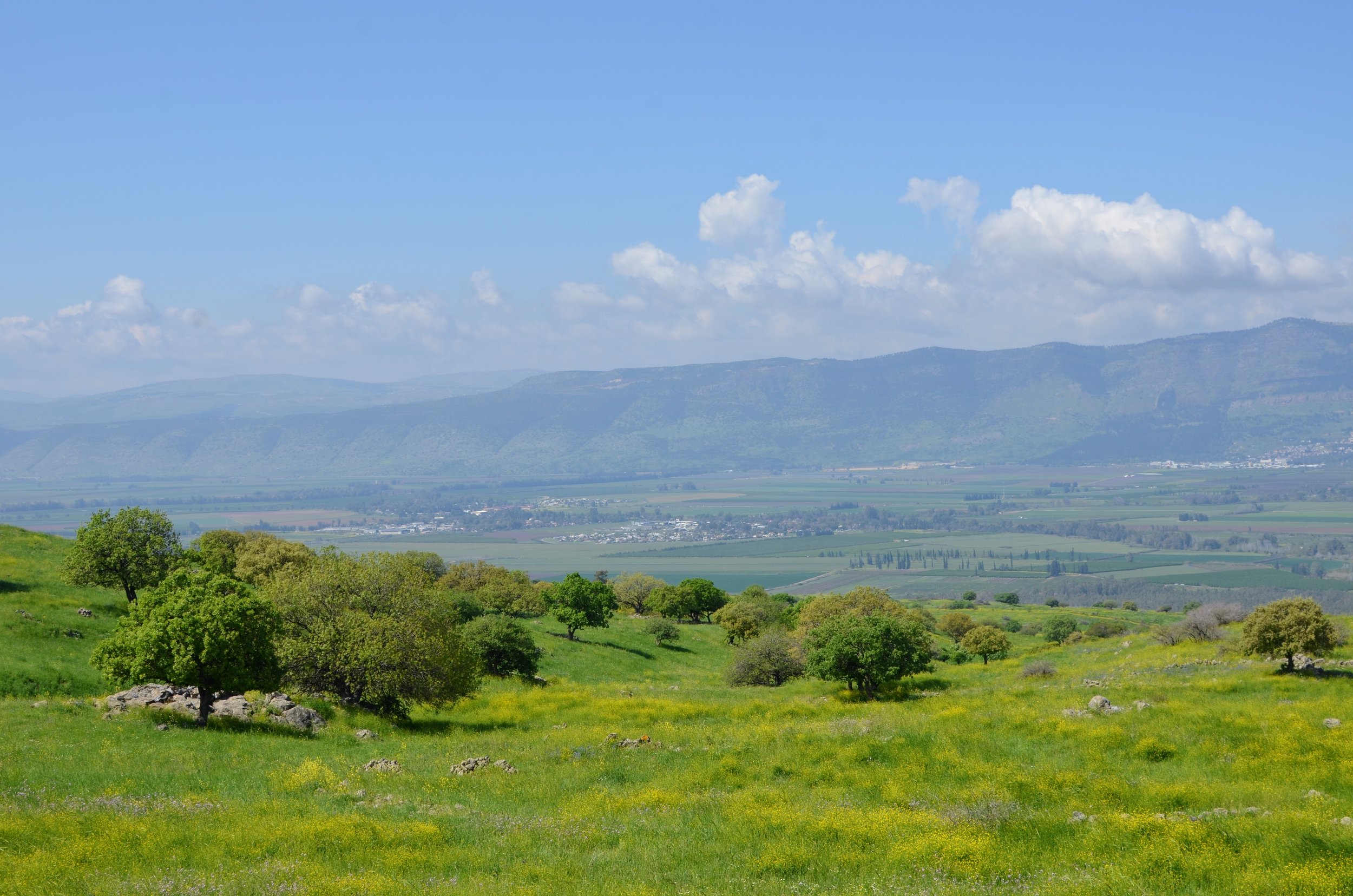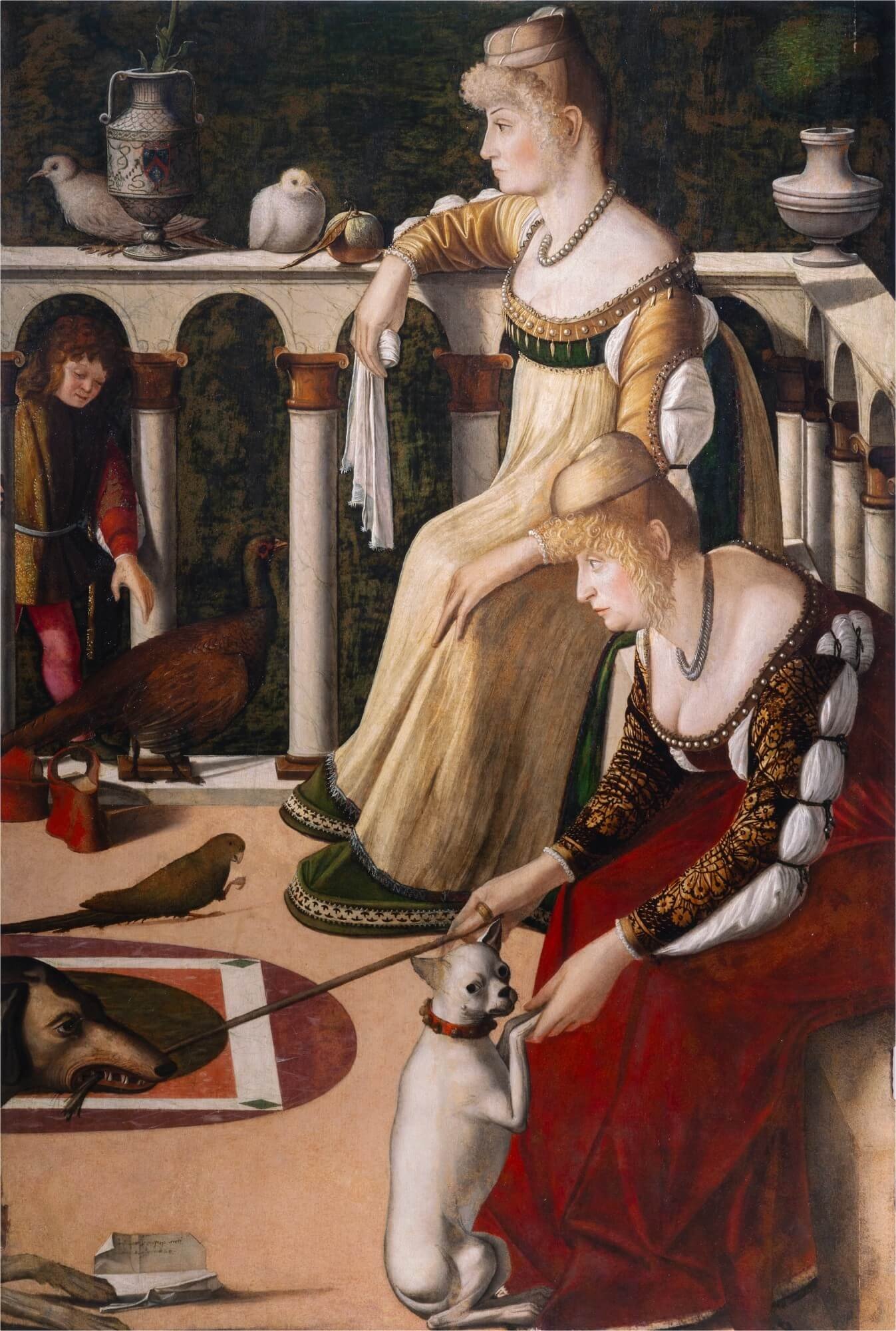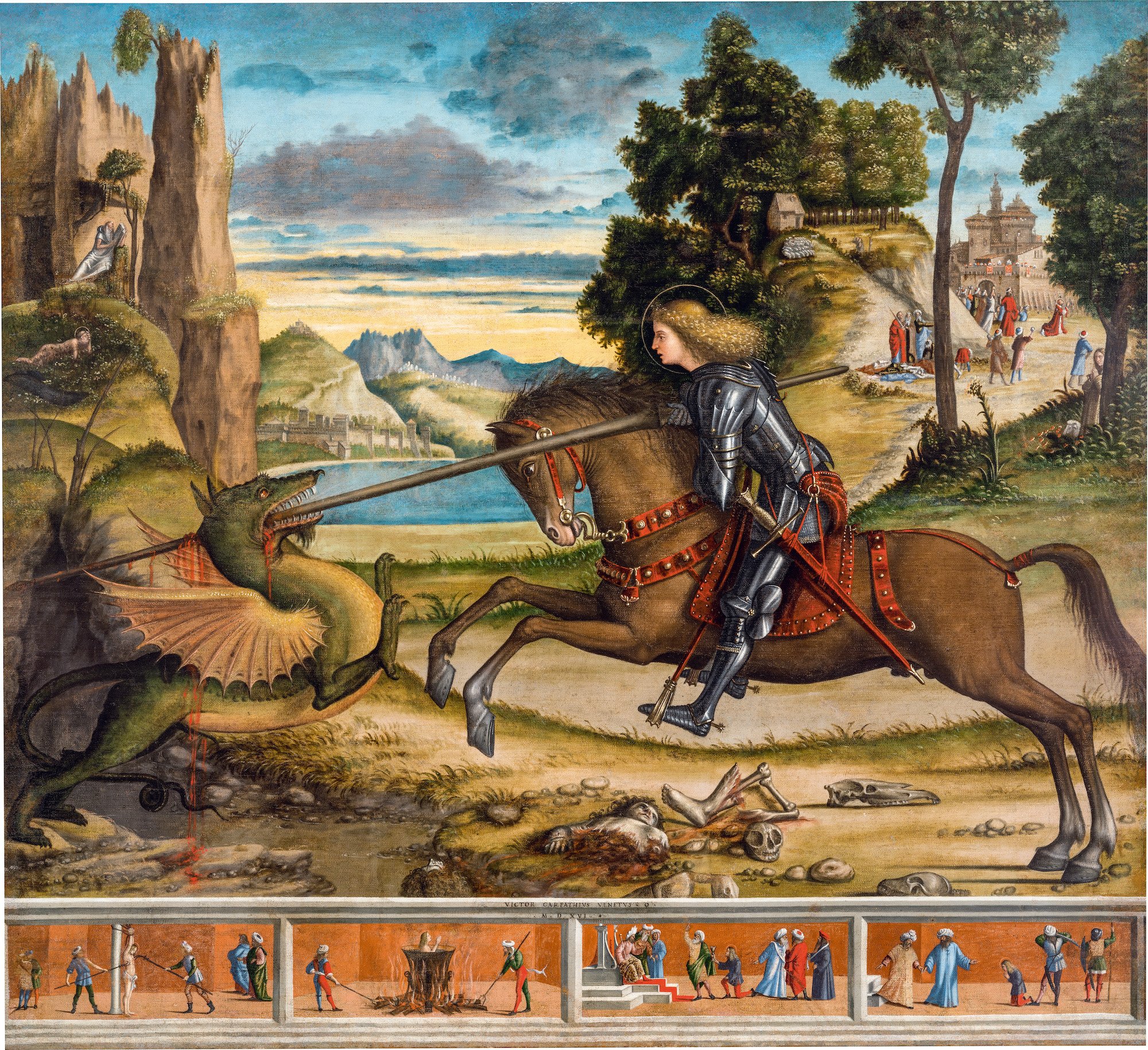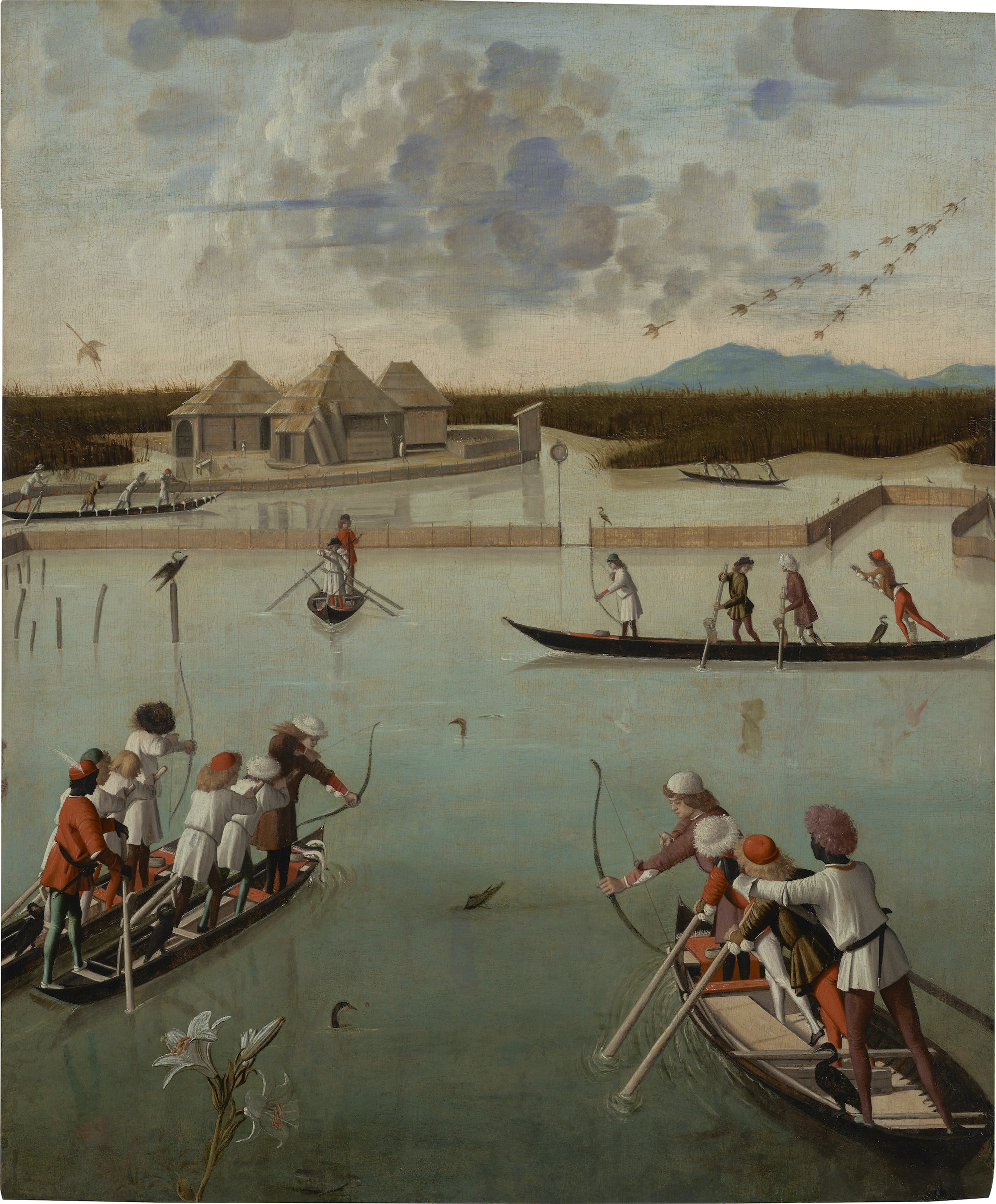The exhibition begins with Ruskin’s “best picture in the world,” the Two Women on a Balcony—but here presented even better than in Ruskin’s day. Sometime in the 1700s this small work, most likely part of a set of folding shutter doors painted for a Venetian palace, was divided from its upper half. The lower portion with the two women eventually went to Venice’s Museo Correr. The upper part, now titled Fishing and Fowling on the Lagoon, ended up at the J. Paul Getty Museum in Los Angeles. The panels, dated together to ca. 1492/94, were only reidentified as being part of the same composition after conservation efforts in the early 1990s. This exhibition now temporarily reunites for only the second time in recent history what was clearly intended to be a single whole—the line of a lily stem even connects the two parts. Their happy reunion begs to remain permanent, if only the Getty and Correr could arrive at a loan agreement to share the works.
In the lower panel, the women gather on a balcony filled with birds and dogs. The scene is busy with domestic activity even if the women (and their dogs) appear somewhat bored by the pet play. The upper panel suggests the reason for their tedium. Above and beyond them, the men have loaded onto their gondola-like boats for a lively hunting and fishing expedition out on the lagoon. The components together reveal the ordering of Venetian society in one view. As both groups contend with their animals, the women in the foreground, who seem little interested in what is happening below the balcony, add humor to the recreation of their husbands beyond. The clever division and animated activity of the entire panel reveal Carpaccio’s great ingenuity with composition, compressing and expanding space to his will to contain his full “care for human life at large,” as Henry James put it. That the scene is clearly cut off to the left would certainly suggest that some additional Carpaccio is still out there waiting to be rediscovered—just look for the matching balustrade and rear end of a brown dog. Adding to this intrigue, the verso of part of the known panel is painted with personal letters appearing to hang from a line in trompe l’oeil. As much as we might appreciate him by the slice, Carpaccio is best enjoyed whole.
The organization of Carpaccio’s compositions was no accident. His studies of faces, architecture, and perspective were exacting. His deliberative process might help explain why we are now left with more of Carpaccio’s preparatory work than almost any other artist of his time. The National Gallery presents thirty of these drawings both to let us appreciate his working methods and to help illustrate his larger paintings that cannot travel. Among these examples, a blue double-sided sheet from the Ashmolean Museum in Oxford is a standout. Titled Head of a Young Woman in Profile (recto) and Head of a Young Woman in Three-Quarter View (verso), the drawings from ca. 1488–89 served as studies for two of the numerous faces in Carpaccio’s Apotheosis of Saint Ursula, one of the paintings in the Accademia cycle. The drawings are not necessarily innovative. They even may have been copies of works by Pietro Perugino and Pinturicchio. Still, through their exquisite modeling created with hatch marks of white and black chalk and washes of brush and brown, they reveal a luminous grace.
Carpaccio’s extensive compositional planning did not necessarily serve him well as his reputation contended with the rise of the modern style of Titian and Giorgione. Even at the time of Ruskin, in 1871, Joseph Archer Crowe and Giovanni Battista Cavalcaselle wrote that Carpaccio was “without any poetry of fancy” in their History of Painting in North Italy. In her current catalogue essay, “Carpaccio as a Draftsman,” Catherine Whistler concurs that he was “overshadowed by the poetic genius of Titian.” Even Peter Humphrey writes that “set against the more heroic and classicizing art, the work of Carpaccio must have appeared staid, quaint, and irrelevant.” At the very least, Humphrey continues, “his narrative paintings and skills as a storyteller may be seen as a vital link in the continuous tradition in Venetian painting from the late Gothic style of the early fifteenth century to the late baroque of the eighteenth.”
But there is more to Carpaccio than merely his role as a historical connection between the painting styles of fifteenth- and sixteenth-century Venice. His appeal is in locating us in spiritual space and infusing this built environment with pious order. We can see why the scuole, those social and charitable organizations of Venice, all commissioned him to paint their lives of Saint George and Saint Stephen and Saint Ursula and the Virgin Mary. The worlds he envisioned were immersive. They could be entered, touched, and breathed. The paradise he creates is indeed “of his own room,” to which he extends a welcoming invitation.
“Vittore Carpaccio: Master Storyteller of Renaissance Venice” opened at the National Gallery of Art, Washington, D.C., on November 20, 2022, and remains on view through February 12, 2023. The exhibition will next be on view at the Fondazione Musei Civici, Palazzo Ducale, Venice (March 18–June 18, 2023).









